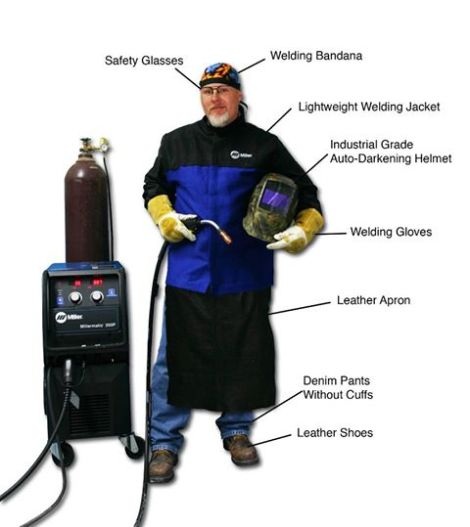Hot work is any process that can be a source of ignition when flammable material is present or can be a fire hazard regardless of the presence of flammable material in the workplace. Common hot work processes are welding, soldering, cutting and brazing. When flammable materials are present processes such as grinding and drilling become hot work processes. Hot work can be dangerous due to the potential for sparks to come in contact with flammable or combustible materials or combustible dusts. Many locations require a permit checklist for performing hot work.
The Canadian Centre for Occupational Health and safety offers these recommendations for safe hot work:
Make sure that all equipment is in good operating order before work starts.
Inspect the work area thoroughly before starting. Look for combustible materials in structures (partitions, walls, ceilings).
Sweep clean any combustible materials on floors around the work zone. Combustible floors must be kept wet with water or covered with fire resistant blankets or damp sand.
Use water ONLY if electrical circuits have been de-energized to prevent electrical shock.
Remove any spilled grease, oil, or other combustible liquid.
Move all flammable and combustible materials away from the work area.
If combustibles cannot be moved, cover them with fire resistant blankets or shields. Protect gas lines and equipment from falling sparks, hot materials and objects.
Block off cracks between floorboards, along baseboards and walls, and under door openings, with a fire resistant material. Close doors and windows.
Cover wall or ceiling surfaces with a fire resistant and heat insulating material to prevent ignition and accumulation of heat.
Secure, isolate, and vent pressurized vessels, piping and equipment as needed before beginning hot work.
Inspect the area following work to ensure that wall surfaces, studs, wires or dirt have not heated up.
Vacuum away combustible debris from inside ventilation or other service duct openings to prevent ignition. Seal any cracks in ducts. Prevent sparks from entering into the duct work. Cover duct openings with a fire resistant barrier and inspect the ducts after work has concluded.
Post a trained fire watcher within the work area during welding, including during breaks, and for at least 30-60 minutes after work has stopped. Depending on the work done, the area may need to be monitored for longer (up to 3 hours) after the end of the hot work.
Eliminate explosive atmospheres (e.g., vapours or combustible dust) or do not allow hot work. Shut down any process that produces combustible atmospheres, and continuously monitor the area for accumulation of combustible gases before, during, and after hot work.
If possible, schedule hot work during shutdown periods.
Comply with the required legislation and standards applicable to your workplace.
0
